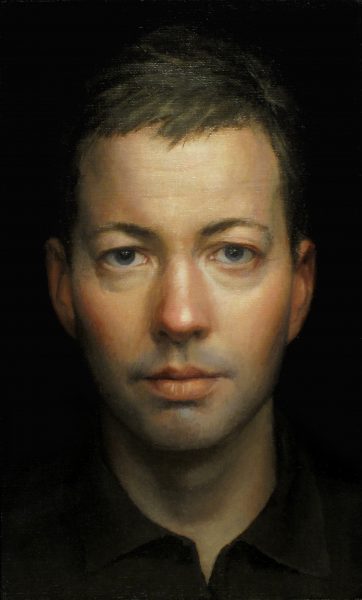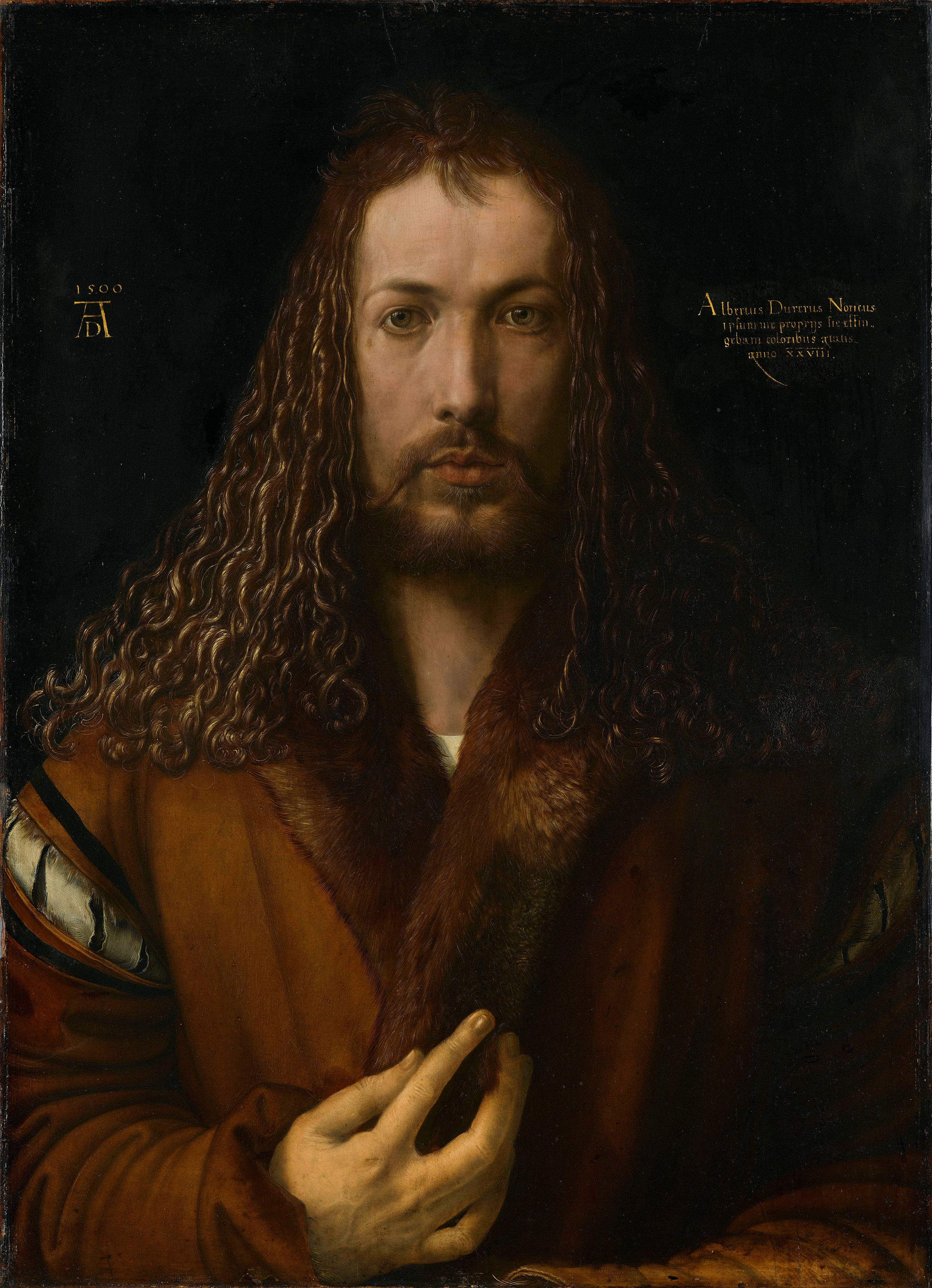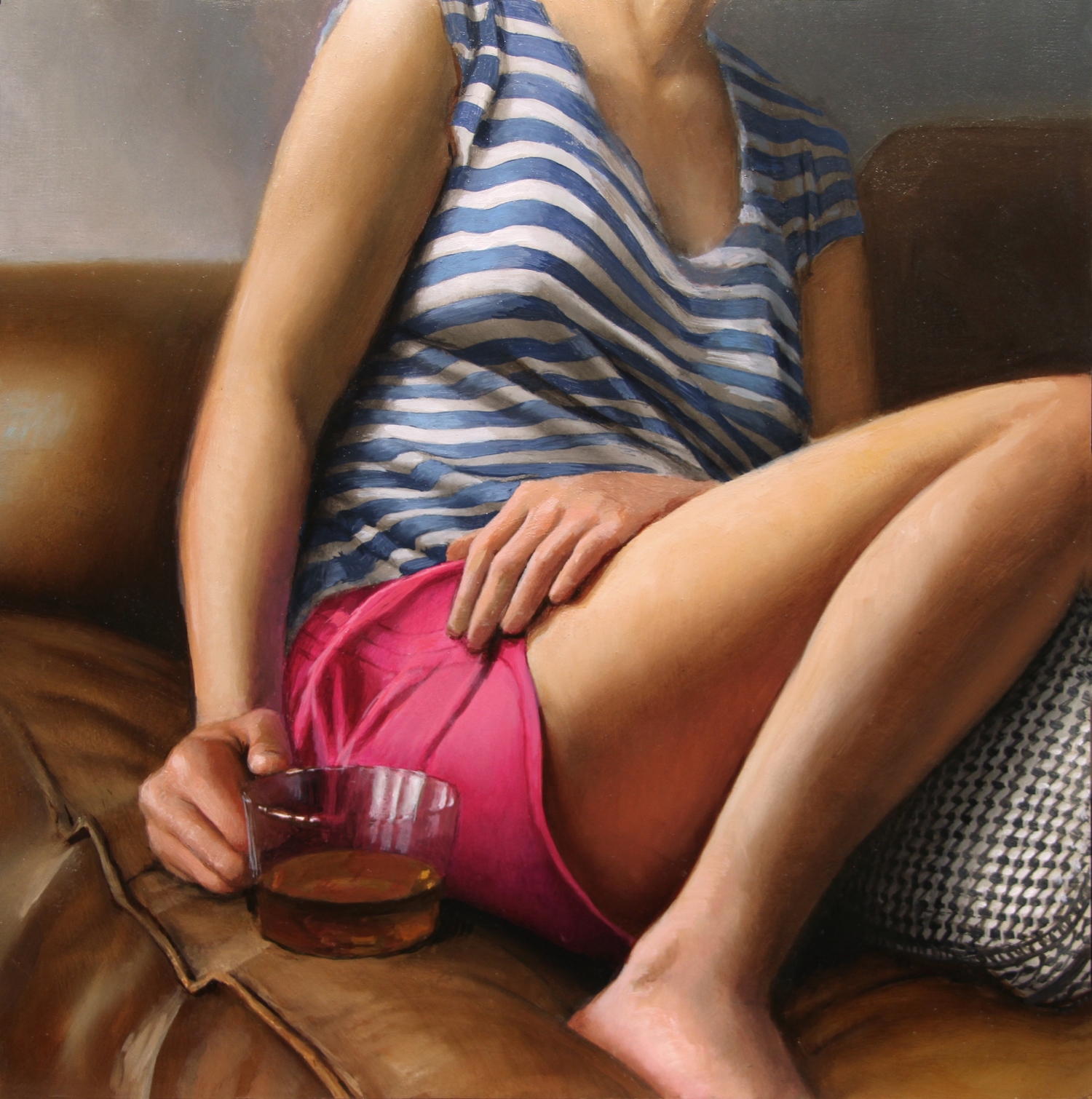Fagerlund's Intimate Painted Moments
Christian Fagerlund’s portraits are modern yet influenced by the past. His self-portrait’s dark background contrasts with the intense yet candle-like illumination of his features. It reminds me of Albrecht Dürer’s Self Portrait in Fur (1500). They share the same confident look. Fagerlund is almost smirking. His eyes search out for you. During the Renaissance, artists’ self-images became more common they achieved greater status. In keeping with the times, Dürer wasn’t just an artist but a scholar who represented and questioned complex religious iconography and drew upon the natural sciences, astronomy, and mathematics. Self Portrait in Fur is, for example, scandalously similar to common depictions of Jesus Christ.
Fagerlund reflects on the old master tradition, utilising their techniques to render light and colour in an appealing way. He mixes pigments with oil, which is then applied in thin layers on the surface, and which then sustains the rich luminosity of the colours. High flexibility in its application from thick impasto and fine detail - offers the artists countless possibilities. Fagerlund explains his approach, “Light is an equal participant in my drawings and paintings: a clear and assertive entity. A love for the relationship between light and form, a strong sense of design and composition, and an understanding of the power of colours are at the core of my process.”
Untitled F-58, 2016, oil on panel
This understanding and use of traditional techniques using oil paint in several layers remain unchanged over the centuries. Fagerlund’s desire to reach the perfect balance between form and light is verified in his snapshots of everyday situations. These are not only situations,but moments, that he seems to observe constantly and with awe. Focusing on familiar body language and conveying sentiment, Fagerlund expresses his models’ emotions. In Untitled (F-58) (2016) a woman is sat on the floor in front of a window. The light coming in reflects on the lacquered, wooden floor. There’s no eye contact. You find yourself asking about this fragile figure - how is this person feeling? Sat hunched over, wearing just a colourful kimono, she seems to be isolated, trapped in a solemn mood. Fagerlund offers the viewer a variety of options: he lays secrecy, surprises and an irritating sense of the unknown onto this female figure. Everything but the colourful kimono is kept as nondescript as possible. Fagerlund frustrates the viewer’s wish to make eye contact and offer empathy. He uses this mystery in a playful way to keep secrets from the viewer and surprises us with his captured moments.
The pure fascination with Fagerlund’s paintings lies in his approach to storytelling, and his skill at expressing emotions through his figures. His paintings look as if they are stills from a film. Fagerlund’s talent for light is no doubt influenced by his reflections on modern photography and film technology. He uses advanced techniques and his personal, contemporary view.
Because Fagerlund uses the same models in his paintings, it allows the viewer to detect a storyline, grasping moments while getting to know the figure’s character. He tells the model’s story through intimate insights into her private life while offering you a broad possibility of stories and opening up questions to the viewer: What does the figure ponder about? Where is she at personally? Who is the figure’s opponent? However, before answering any of these interpretative questions, the painter invites the viewer to indulge them in their privacy.
Untitled F-53, 2016, oil on panel
Fagerlund also plays with scale. His paintings are either miniatures or large canvases, “Scale is also an important aspect of my work; I tend to work either very small or very large. The intentional shift away from a “normal” scale dramatically affects the content, meaning, and interpretation of a piece. In my miniatures, I create an intimate experience that is transportive for the viewer.” When you see Fagerlund’s miniatures up close, they demand intimacy. You have to get closer, and closer, to see them properly. In this way, the scale demands the creation of intimacy as it narrows the gap that divides the viewer and the painting.
Although Fagerlund revives the traditional canon of art history, he never loses touch of the contemporary: when his female main character is drinking tea on the couch, Untitled (F-53) (2016), he again uses close-up and rough cuts, in reference to smartphone photography, to capture a calm moment. In this way Fagerlund emphasises the old masters tradition with modern contemporary aspects, he provides the viewer with mysterious stories of the mundane and all its secrets. The brilliance of the work is that the viewers also find themselves inhabiting those mesmerising moments in personal memories or subsequent dreams.



